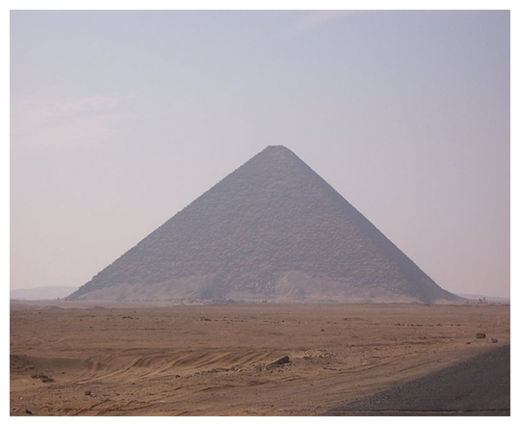
The first king of the 4th dynasty, Snefru (reigned 2575-2551 BC) built Egypt's first true pyramid at Dashur, after a couple of failures. The task was overshadowed by his son Khufu, or Cheops, when he built the Great Pyramid at Giza.
More than 3.5 million cubic meters (123 million cubic feet) of building material were mined and transported at Dashur, some 20 miles from Cairo, yet very little evidence remains of what went on at the pyramid practice site some 4500 years ago. Nature wiped virtually any trace of human activity.
To expose the ancient pyramid playground, a team of Earth scientists from Germany turned to fractals.
Fractals are natural or artificially created geometric patterns that form designs. These appear to repeat themselves over and over when magnified.
Deltas created where rivers meet the ocean often display fractal properties. Dissected by river channels which drain into the floodplain of the Nile, the area around Dahshur was indeed supposed to show an abundance of natural fractals. The new study showed that was't really the case.
Arne Ramisch of the Freie Universität Berlin in Germany and colleagues from the German Archaeological Institute in Egypt created a digital model of the topography around Dahshur and investigated the region using fractal pattern recognition analysis.
The researchers discovered distinct differences "between natural and human-shaped areas," they wrote in the journal Quaternary International.
In particular, the researchers identified a huge non-fractal footprint around the pyramids.
The surprisingly large area - - at least 2.3 square miles - - did not feature the natural fractal geometry, suggesting that it was modified under the orders of Snefru and other pharaohs of the Old Kingdom.
According to the researchers, the lack of natural fractals suggests that the site was once occupied by broad terraces several miles long.
They would have "increased the sense of monumentality of the pyramids," Ramisch told New Scientist.



It should read "built Egypt's first true pyramid copy". No one can date rock, there is no certain date on the great pyramid and finding the oldest graffiti you can find doesn't mean you know the date it was built. I am so sick of "offical egyptoligists" at this point I can barely stand to read articles on egypt anymore.